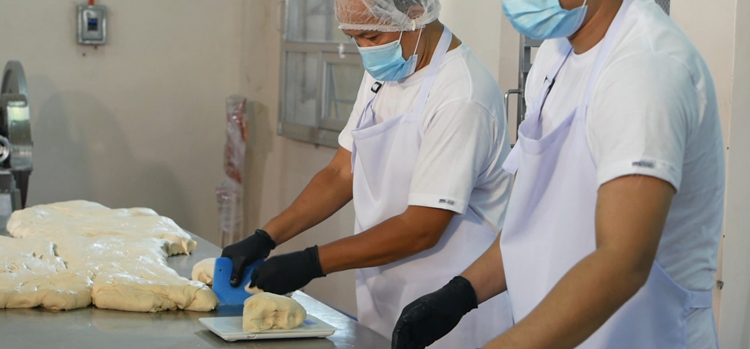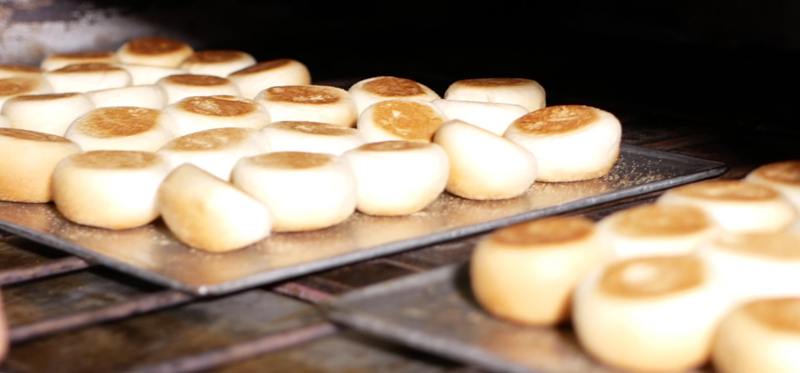Tinapayan Festival Highlights Value of Pandesal in Filipinos’ Daily Lives
Understanding the potential and role pandesal plays in the community and in Filipinos’ lives
13 July 2022, Manila – The pandesal has made its mark in the lives of Filipinos since the 70s. In the 80s, the Philippine bakery industry used up to 40% of their flour allocation to make pandesal. Those decades were known as the heyday of pandesal in the country. However, a bigger problem looms over Filipinos – with many bread products available in the country, what roles does the pandesal play in the lives of the Filipino community today?
Tinapayan Festival, a local bakeshop in Manila offering soft and sweet baked products for over 40 years, has made its commitment to uplift the bakery industry in the country by introducing and innovating local products that give value to its customers and at the same time, support the local economy.
“With the rise of prices of our raw materials and baked products like bread, there is a threat of shortage in the country, so at Tinapayan Festival, we are further rallying the use of agricultural products as part of the local bakeries’ recipes and have put this movement at the forefront of what we do,” shares Lucito ‘Chito’ Chavez, Founder and General Manager, Tinapayan Festival.
Little is it known that the pandesal has been an everyday staple in a lot of households in the country. It has been part of the local culture for decades. Tinapay King of the Philippines shares that many Filipino ancestors, grandparents and the like grew up with pandesal as a staple for their breakfast. “In the1960s, it was the time when local bakeries only offered a few products from the local ‘tasty’ or loaf bread, mamon, monay, to even just a few ensaimadas. Pandesal would always be part of the offerings local bakeries would have. When you talk about pandesal outside of the country, people would know it’s from the Philippines,” muses Chavez.
The pandesal has truly become a part of Filipinos’ everyday lives be it for breakfast or for a snack. Pair it with the hot tablea tsokolate or Kapeng Barako, Filipinos surely had a thing for pandesal.

Understanding where it all began
The team behind Tinapayan Festival believes that looking back to their roots in Cuenca will help them realize the true value and role pandesal has in the lives of Filipinos over the years. While San Jose, Batangas may be known as the Egg Basket of the Philippines, the egg capitals of the country back in the late 60s to 80s were known to be the provinces of Bulacan and Rizal where many egg farms were thriving and running. But in the 80s, the production of eggs declined in these two provinces but boomed in San Jose where many local entrepreneurs put their time and effort learning how to run their businesses successfully.
During that time, many of the best local bakers would be found in Cuenca, Batangas, which has been dubbed as the ‘Home of the Bakers.’ The small town in the province of Batangas has produced quality bread products over the past decades, and gained recognition from various industry players and government agencies.
“There was a time when many of the sought-after local bakers hailed from Cuenca. They were in demand back in the 80s and 90s. They had all the techniques and skills to make quality pandesal that could be sold internationally. They were truly the pillars who could really stand and continue making quality pandesal. However, because of many challenges within the bakery industry, many have shifted from running local bakeries to venturing into different businesses. This is a huge problem for the country, and it needs to be dealt with accordingly and collaboratively with both the local and national government, most especially the local community,” shares Chavez.
Uplifting Pandesal
The pandesal is a very versatile bread that people from all walks of life have grown to love. Many prefer to pair it with their favorite morning drinks or even with the itlog na maalat from Pateros or the kesong puti from Laguna.
“There was a time back in the early 90s when Tinapayan Festival supplied a lot of bread to established hotels in the country. Many have seen the value of the pandesal as our national bread and have served this to very important guests not only from the Philippines but international VIPs who have come to the country,” shares Chavez.
While price may change over time, many Filipinos are encouraged to recognize and understand the value that pandesal has made in the lives of many. “It’s true that there are many challenges the local bakery industry faces, but if we work together, both private and public sectors, we will once again make pandesal our national bread that many in the country will continue to support and many other countries would come to recognize,” stresses Chavez.
One way to further uplift the pandesal and provide value to customers is by utilizing locally-grown agricultural products that can help support not only the local bakery industry but the agricultural industry as well. “We have made a variety of pandesal products from malunggay, kamote, squash, and potato over the past few years in hopes to help alleviate the local bakery industry and once again give back its glory in the country,” says Chavez.
Visit Tinapayan Festival at 1650 Dapitan St. corner Don Quijote, Sampaloc, Manila or call (02) +8 732 2188 or (63) 0961 715 2714 to place your advance orders. Send them an email at sales@tinapayan@gmail.com.
Tinapayan Festival is also available in GrabFood and FoodPanda. You can also place bulk orders in advance. To learn more about Tinapayan Festival’s pandesal products, follow them on Facebook or Instagram.
Liked this post? Follow SwirlingOverCoffee on Facebook, YouTube, and Instagram.


